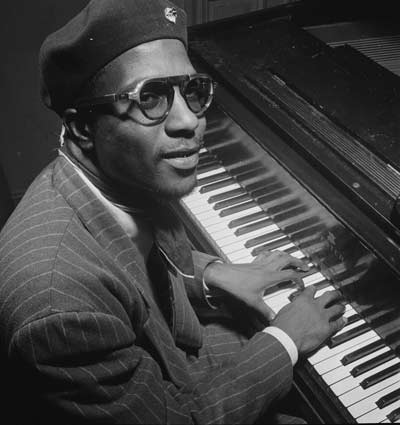 Thelonious Monk, Minton's Playhouse, New York, N.Y., ca. Sept. 1947. Thelonious Monk was a highly innovative pianist with his own distinct improvisational style. Thelonious Monk, Minton's Playhouse, New York, N.Y., ca. Sept. 1947. Thelonious Monk was a highly innovative pianist with his own distinct improvisational style.
The Many Styles Of Jazz Music Part 2
Bebop-The dance elements gradually faded away into a true art of real music by the musicians Miles Davis, Bud Powell, Clifford Brown, Thelonious Monk, Sonny Stitt, and Ray Brown who wanted to steer away from the commercial type music. These musicians sought to use examples of the Jazz musicians of the past such as Lester Young, Coleman Hawkins, Earl Hines and Art Tatum to expand Jazz music to another level.
At this time, Jazz music moved away from the basic melodic element of the piece to produce a more abstract chordal sound of dissonant tones, and chromatic patterns. The dissonant tones in Jazz music can be heard when two tones are played simultaneously in a clashing manner that can either sound strange or terrible depending on how the tones of the chord fit together as melody notes from a particular key. Clashing sounds can also occur from the use of lowered fifths and raised fourths.
The chromatic sound of the music allows the musician to freely play each of the twelve tones of the instruments without restriction. Musicians were able to play substitute chords as well as altered chords that could change the key of the piece in a whim. The change in rhythm became more discreetly energetic in sound which is used predominantly in Jazz music today. For instance, the cymbal was hit in beat of a 1+a 2+ a 3 +a 4 +a while the snare and bass drum are suddenly hit without warning.
Soul Jazz - From the late 1950's, a style of jazz emerged that derived from gospel and soul using the tenor saxophone, repetition with melodic groove hooks, and less intricate improvisation that occurred over the chordal harmonies. One well known exponent of the style was pianist Ramsey Lewis, who wrote "The In Crowd" which became a hit in 1965. Also called 'Funky Jazz', the signature of Soul Jazz was a powerful, grooving bass line, with heavy emphasis on rhythm.
Modal Jazz - Bill Evans a pianist of this time made his mark in the making of new jazz music styles by using examples of major and minor medieval church modes instead of the usual chord progressions - this approach changed the rules by allowing the musicians to form new harmonies regardless of the key. The best known modal jazz recording is perhaps Miles Davis' Kind of Blue.
Jazz Fusion - Between the late 1960's and middle 1970's, Jazz music was infused with the instrumentation, amplification and electronic effects of the rock band - much to the horror of traditional Jazz lovers. The sound of Jazz fusion was often complicated, mixing chordal harmonies, with oddly mixed meters with syncopating rhythms. Acoustic stringed instruments were out: electric guitars, bass, piano, synthesizer and even violin were all par for the course. The musicians Miles Davis, Herbie Hancock, Chick Corea, Tony Williams and Frank Zappa and many others performed this music. Another great example of this style of jazz, again by Miles Davis, is the poorly-received at first, but now regarded as classic Bitches Brew .
.
Smooth Jazz - In the same way that punk simplified the excesses of progressive rock, the late 70s and early 80s saw Jazz become lighter and more accessible to the masses. This simplified pop-jazz begat muzak: an electronic form of popular music on the radio. This music made popular by Kenny G., Najee and Grover Washington Jr. is typically slower and less complex than earlier jazz forms, and as such is often looked downn upon by Jazz purists.

|